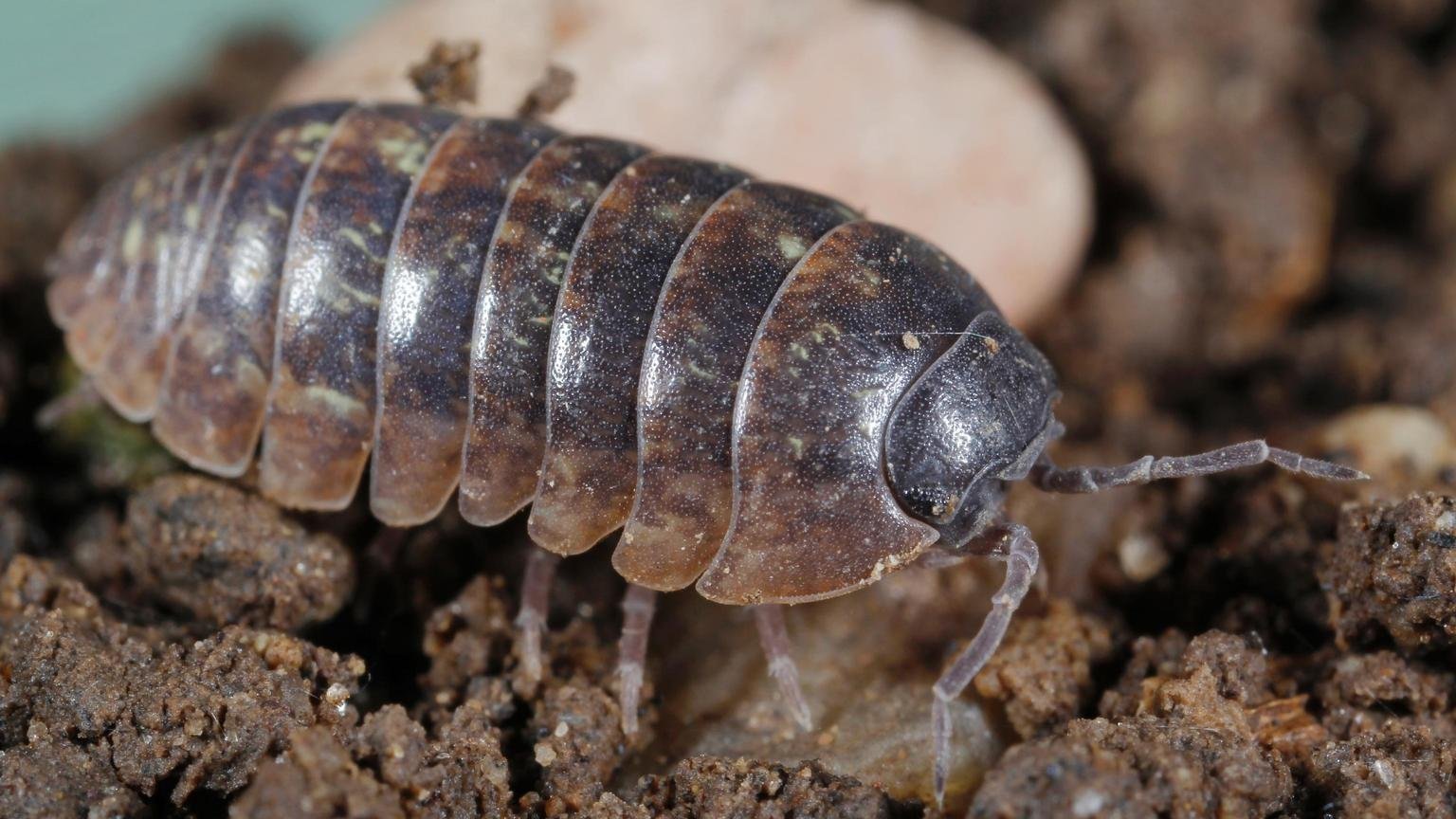Creature Feature: Segmented Stories - Pillbugs and Trilobites
As I write this we are halfway through our Dynamic Earth school program. Certainly one of our more content-heavy programs, Dynamic Earth both geologifies (not a word) and paleontologifies (also not a word) students by spotlighting rocks, minerals, and fossils in a marbleous (yup) two or four-hour program. With a seasoned background as a naturalist spanning a quick four years, I have come to accept that I definitely don't possess all of the answers and very much understand that I don’t need to. I am now going to highlight a scenario in which I have responded “I have no idea” to a question posed by a fourth-grader.
While examining authentic trilobite fossils varying in size, the question was “are pillbugs descendants of trilobites?” My reflex response was a hearty “sure are!” followed quickly by a “oh wait maybe not…I have never thought about it before…let me research and get back to you because I truly have no idea.”. The following text is my “follow through” which conveniently and purposely has become the topic of this month’s creature feature:
Pillbugs* (Armadillidium vulgare), also known as woodlice or roly-polies, are intriguing creatures that capture the imagination of both nature enthusiasts and scientists alike. These tiny terrestrial crustaceans, belonging to the Armadillidiidae family within the Isopoda order, boast a distinctive ability to roll into a tight ball as a defense mechanism. Despite their small size, pillbugs play a significant role in the ecosystem as decomposers, contributing to nutrient cycling by breaking down decaying organic matter.
Pillbug (Armadillidium vulgare). Photo credit: University of Maryland Extension
One of the captivating aspects of pillbugs is their resemblance to trilobites, ancient marine creatures that once roamed the seas millions of years ago. Trilobites (Trilobita), characterized by their segmented bodies and jointed limbs, hold a unique place in paleontological history. The visual similarities between pillbugs and trilobites have sparked curiosity about a possible evolutionary link between these creatures.
Trilobites (Trilobita). Photo credit: Live Science
However, despite their shared physical traits, pillbugs are not direct descendants of trilobites. Both groups belong to the vast family of arthropods, characterized by their segmented bodies and exoskeletons. Both roll(ed) up their bodies as a defense mechanism. Trilobites, which existed on Earth for over 270 million years before their extinction, belong to a distinct class of arthropods that branched off early in evolutionary history. On the other hand, pillbugs belong to the Isopoda class, a separate evolutionary branch within the arthropod lineage.
The intriguing resemblance between pillbugs and trilobites is a classic example of convergent evolution, where unrelated organisms develop similar characteristics due to comparable environmental pressures. Both groups adapted to their habitats, resulting in analogous features like the segmented body structure and jointed appendages, despite their different evolutionary paths.
While pillbugs share certain traits with trilobites, their evolutionary history diverges, showcasing the complexity and diversity of life on Earth. The uncanny similarities serve as a reminder of the wonders of nature's evolutionary mechanisms, highlighting how different organisms can independently evolve comparable adaptations.
There you have it; pillbugs, with their endearing rolling behavior and crucial role in ecosystems, share striking visual resemblances with trilobites. However, their evolutionary paths took different trajectories, placing them in distinct branches of the arthropod family tree. Exploring the connections and disparities between these ancient creatures enriches our understanding of evolutionary biology and the intricate tapestry of life's history on our planet…
…and provides answers to questions asked by fourth graders.
* Belonging to the same order Isopoda, sowbugs, like pillbugs, are terrestrial crustaceans but lack the ability to roll into a ball for defense. Instead, they have a flatter body shape and move with more flexibility. Sowbugs thrive in damp environments, typically found under rocks, decaying wood, or leaf litter, where they feed on decaying organic matter. Though visually resembling pillbugs, their behavioral and physiological differences reveal distinct adaptations to their specific ecological niches, emphasizing the diverse evolutionary paths within the Isopoda order.
Submitted by naturalist Ali Posner, January 2024


